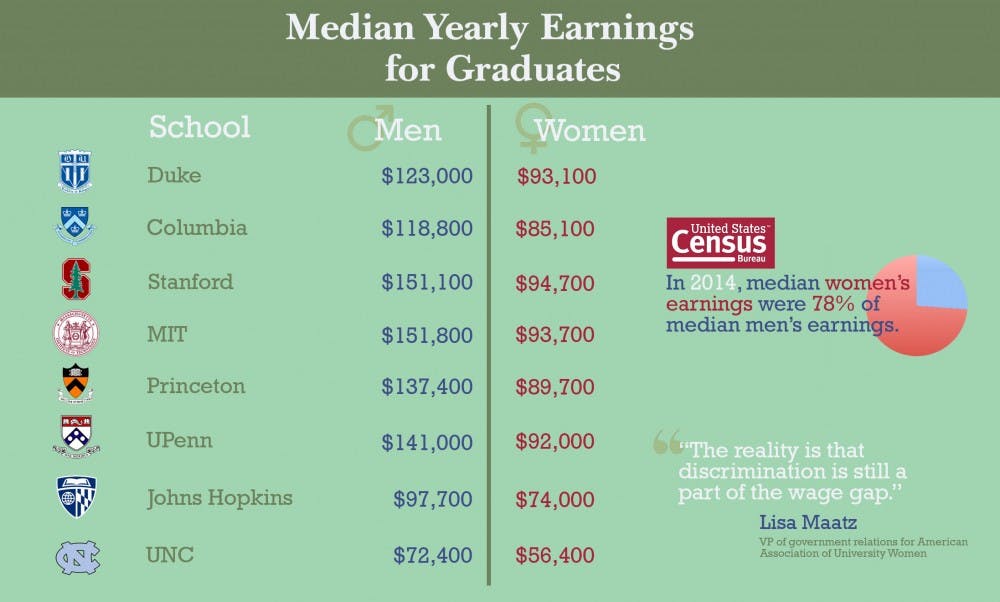Duke’s male and female students fulfill the same graduation requirements, but they do not bring home the same paychecks after leaving school.
Data released recently by the Department of Education shows that Duke women earn less than Duke men early in their careers, and the difference widens as the years pass. Ten years after enrollment, there is a pay gap of nearly $30,000 between male and female alumni. At that point in their careers, female Duke graduates have median yearly earnings of $93,100—compared to $123,000 for men. The gap is similar to that seen at peer institutions.
“It’s not surprising in any way, but we absolutely can’t settle for it,” said Lisa Maatz, vice president of government relations for the American Association of University Women. “It represents discrimination, it represents a devaluing of women’s work and quite frankly, it weakens the whole economy.”
Coming out of Duke, many women and men compete for the same jobs, but the financial outcome is often different, said Stephanie Helms Pickett, director of the Women’s Center.
“There are countless examples and narratives of women making less than men when academic background, intern experiences, clubs, leadership experiences, research and faculty recommendations are equal and constant, and yet somehow the man still makes more money or has a more significant package overall with opportunity determined at the onset for advancement,” Helms Pickett wrote in an email Wednesday.
The gender pay difference from Duke and its peer schools is comparable to the nation’s pay gap as a whole. The U.S. Census Bureau released data Wednesday showing that median women’s earnings were 78.6 percent of median men’s earnings in 2014—a slight increase from 2013, but not a statistically significant one.
A difference in career choice between men and women accounts for the gap to a certain extent, experts say. Also playing a role is the fact that women take more time away for work for caregiving and work fewer hours on average.
When these factors are controlled for, the pay gap shrinks—but it still exists, Stanford University research has found. And though research has found that working mothers are at a particular disadvantage compared to women without children, the pay gap exists before women become mothers. One year after graduating from college, women made 82 percent of what men did in 2009, according to a report from the American Association of University Women.
“The reality is that discrimination is still a part of the wage gap,” Maatz said, noting that so-called “pink collar” jobs—those dominated by women—make less than comparable jobs that are dominated by men. For instance, social services workers, who are more likely to be women, make considerably less than parole officers, who are more likely to be men, though the jobs are relatively similar.
The pay gap is even larger for women of color, Helms Pickett noted.
“The wage gap relates to dynamics of power and privilege, considerations women have been battling for quite a long time,” Helms Pickett wrote in an email Wednesday.
She recommended that Duke women research the pay gap and learn to negotiate their salary and benefits.
“You pay the same amount for that Duke education,” Maatz said. “You should be earning an equivalent amount.”
Get The Chronicle straight to your inbox
Signup for our weekly newsletter. Cancel at any time.

